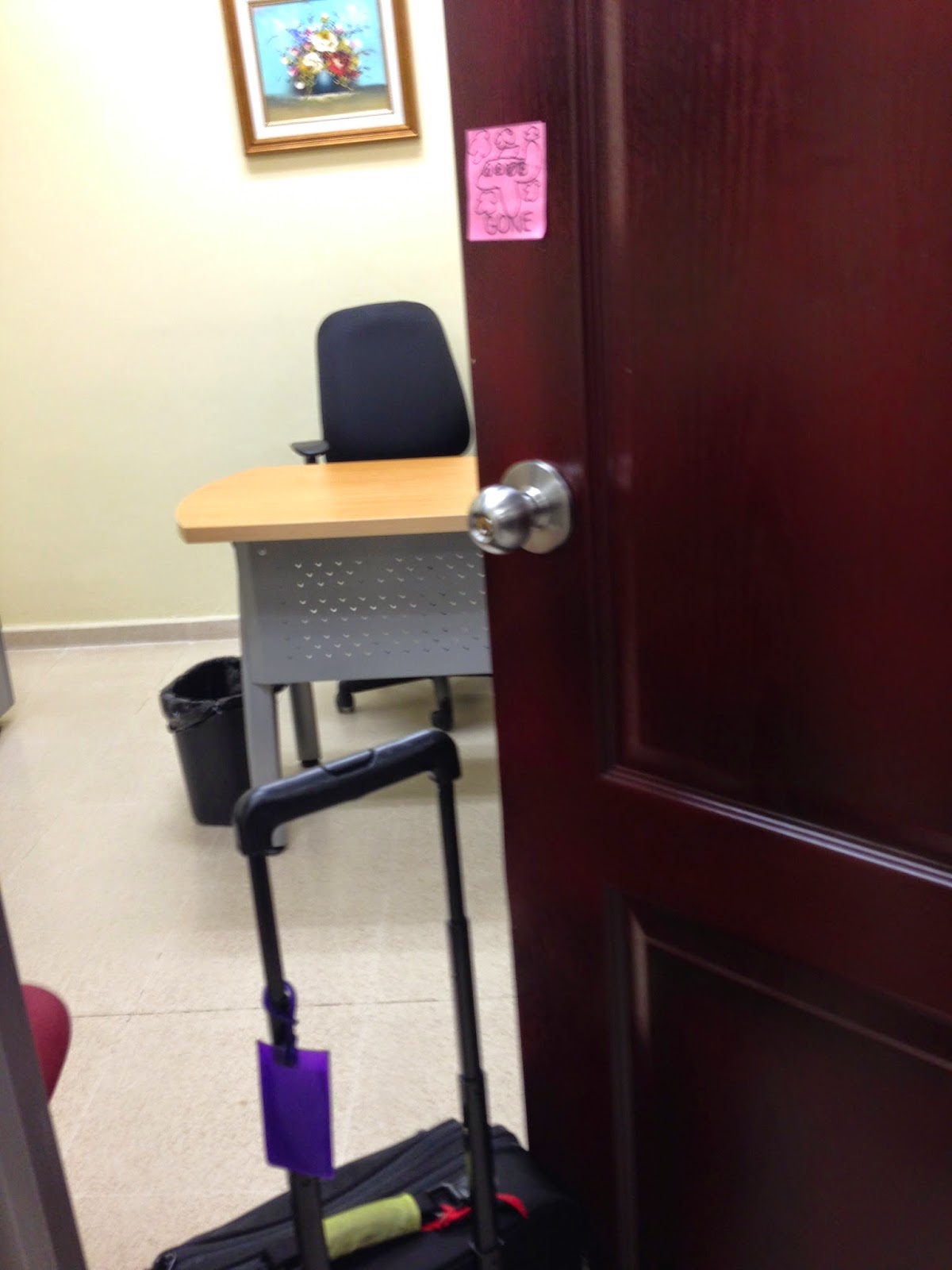Today, I went to the Punta Pacifica Medical Center. Essie Maduro has been watching me and my cough, night sweats, and fatigue closely and today, she made an appointment for me to see a doctor. It's time. She has friends who have TB but didn't know it, and she wants me to check this out before leaving Panama.
She's right.
So today, after finishing the class I'll be giving tomorrow en Espanol, I went down to see Dr. Dayme Quintero, at Punto Pacifico Medical Center.
Dr. Quintero is a great doctor! She was very thorough, checking me out and ordering a bunch of tests - namely a chest x-ray, and blood work, as well as a sputum culture. (N.B. The former all looked fine, so we await the results of the latter.) And all was done in fluent English.
The only negative was having to exit the cab in mid-street in a torrential downpour due to construction of a new entrance. Oh, and also, her measurement of height HAD to be wrong because it showed me as 4 inches shorter than I thought I was! (Anna Rachel, I guess you're right - you ARE taller than I am)
It's always interesting to experience how medical systems are different in different parts of the world. I've had the "opportunity" (how's that for reframing?) to do "participant observations" (another reframe - great, eh?) either as a patient (rarely), as a patient-advocate/colleague, or as a concerned bystander in a number of countries' medical systems - USA (duh), Brazil, Canada, China, England, France, Ireland, Netherlands, South Africa, Spain, Sweden, and now Panama, among others. In some, my contact has been with individual doctors, as it was here in Panama. In others, it was with hospitals, public or private. In most, we faced the additional challenge of language, but in all, there was concern and worry and uncertainty. Of course, in Panama, Punta Pacifica is a Johns Hopkins affiliated medical center with a huge, gleaming hospital that is purported to be one of or even, as their own literature claims, the best in Latin America. It is also costly for the area although still far, far, far less expensive than medical facilities in the USA.
Besides the lower costs, there have been certain commonalities: Paying in cash up-front (I wonder how/if this differs for locals?), different types of facilities for consultation (from an individualized exam room with a crocheted pillow on the exam table to a regular business office with an exam table in one corner to a sterile single-purpose exam room), lab testing and sample collection (with the low-end being, literally, a broom closet for clean-catch urine collection), different treatments and medicines (always a concern for folks who have drug allergies as some of my clients have had), different ways to get medication (over the counter, behind a pharmacist without an Rx, or by a pharmacist only with an Rx), different philosophies of treatment from a more hands-off approach such as the almost archetypal "take 2 aspirin and call me in the morning if you're not better" of some docs, to a far more interventionist one. Of course, my observations are the result of an uncontrolled study - no control groups plus there is the artifact of different medical conditions - some far more serious (a detaching retina, for example) than others (sprained ankles, etc.) But in each case, regardless of the superficial (or not so superficial) differences, it has been interesting to see a common thread of concern for the patient, and intelligence - perhaps these are the common core of care?
I realize that my experiences are not "typical" since much of the time, I have observed the kinds of facilities that have English-speaking doctors, which are often, though not always, private ones. And I've had the luxury of being able to pay (though getting the cash has, at times, been a scramble) plus nothing so far (touch wood!) has been all that serious. But even so, the differences have been striking.
In any case, this little glimpse of Panama's medical system - unusual though it was - has been fascinating. And I hope I never have reason to get more than a glimpse!






































